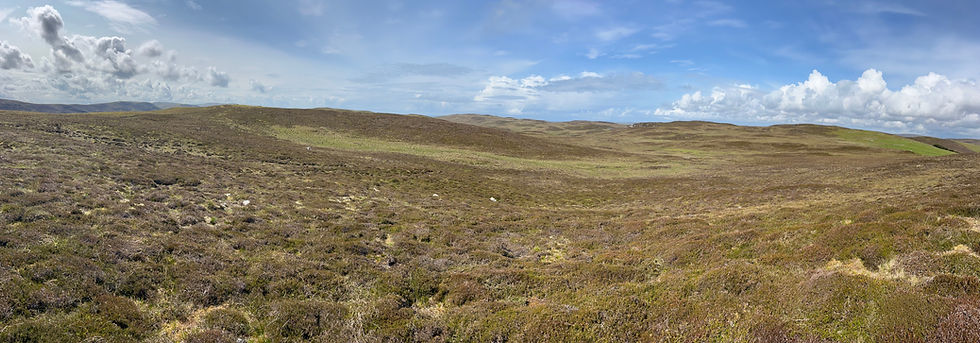Site in Focus - Sandy Loch Oddity
- Archaeology Shetland
- Dec 1, 2021
- 2 min read

At the north end of Sandy Loch in Lerwick – the sandy beach end – a building emerges when the water is low. Recently the weather has been dry enough for a large portion of the building to be glimpsed again though some of it remains submerged. It may, in fact, be two buildings.
What can be seen is a roughly 4 by 12m rectangular structure with an internal division into two nearly equal sizes. The kerbed and roughly paved entrance to the southeast corner is 1m wide and curves south and then east, still traceable under the water. It appears to have another somewhat poorly defined wall of approximate equal length running adjacent 1m from the southern wall. The wall foundations are neatly cut and filled with stone rubble. Chunks of roughcast concrete can be found mixed amongst the rubble. A north to south, roughly cobbled road runs near the structure(s) and disappears under the water.
We cannot find this building in any of the archive photographs or listed on any maps. It appears to be the focal point of the hand grenade range at this end of Sandy Loch from WWII, the preponderance of fragments heavily concentrated here. Toward the western end of the northern wall there is a concentration of melted metal overlaying a portion of wall.
So, what is it? A derelict building utilised for target practice or built specifically for it? Arguing against the latter is the nicely kerbed entryway – why bother adding this on? It seems more likely a structure associated with the reservoir. Nonetheless, when this emerged during an even lower water table a number of years ago it appeared to have a small garden as well. This was evidenced by piles of stones in between rows not far from the southern walls.
Incidentally, three tank traps from WWII are also poking out of the water presently. The eagle-eyed can just see them in the photograph of the kerbed entrance below.


*Update: Some clever sleuthing by Samuel Sjoberg has likely solved the mystery of this building. From 1906 Shetland Times articles, some rancor developed between locals and the council in reference to the damaged road alongside Sandy Loch. A shelter had been built to extract, clean and store sand for use in building trades. The damage was said to be a result of the cartage of stone and sand whilst the council pointed out the most damaged area did not involve such traffic. It appears it was repaired regardless of fault. A snippet of news regarding the original structure is included to the right.







Comments